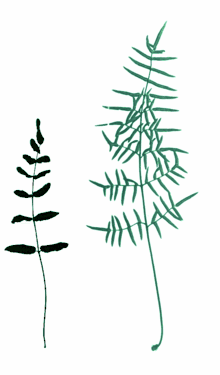Pellaea atropurpurea
Pellaea atropurpurea, commonly known as purple-stem cliffbrake or just purple cliffbrake, is a fern native to North and Central America. Brake is an old word for fern, related to the word bracken. Like many other members of the Pteridaceae, it is a rock plant, needing a calcareous substrate.
| Pellaea atropurpurea | |
|---|---|
 | |
| Formation of Pellaea atropurpurea | |
| Scientific classification | |
| Kingdom: | Plantae |
| Clade: | Tracheophytes |
| Class: | Polypodiopsida |
| Order: | Polypodiales |
| Family: | Pteridaceae |
| Genus: | Pellaea |
| Species: | P. atropurpurea |
| Binomial name | |
| Pellaea atropurpurea | |
P. atropurpurea is an apogamous autotriploid, with 3n=87 (actual base number, n=29), and is one of the historical parents of the hybrid species complex, Pellaea glabella. Apogamy, or the ability to reproduce non-sexually, is common among rock ferns in the Pteridaceae.
Characteristics
This fern produces clumps of widely arching fronds. The stipe and rachis of the blade are purple, while the blade itself has a blue-gray tinge to it. The upper pinnae are long, narrow, and undivided, while the lower ones are divided into 3–15 pinnules. The pinnae are, for the most part, opposite. Fertile fronds are longer and more heavily divided. They produce sori, which lack a true indusium, within the inrolled margins of the pinnae.
This plant may be distinguished from the similar Pellaea glabella by its hairier nature and larger form.
Ecology
Pellaea atropurpurea grows in the crevices of dry limestone cliffs, rocky slopes, crevices in alvars,[2] and mortared walls. It is endangered in Florida, Iowa, and Rhode Island. It has become extinct in Louisiana since the limestone caprock of a salt dome at Winfield, the only location for the fern in the state, was quarried away.[3]
References
- "NatureServe Explorer 2.0 - Pellaea atropurpurea Purple-stem Cliffbrake". explorer.natureserve.org. Retrieved 9 October 2020.
- Catling, P.M.; Brownell, V.R. (1999). "Alvars of the Great Lakes Region". In Anderson, R. C.; Fralish, J. S.; Baskin, J. M. (eds.). Savannas, Barrens and Rock Outcrop Communities of North America. Cambridge: Cambridge University Press. pp. 375–391.
- Moore, David (Spring 2013). "The limestone hill at Winnfield Louisiana" (PDF). Louisiana Native Plant Society Newsletter. 27 (2): 5–7. Archived from the original (PDF) on 2013-11-10. Retrieved 2013-11-10.CS1 maint: ref=harv (link)
Other sources
- Boughton, C. (2005). Ferns of Northeastern and Central North America. New York: Houghton Mifflin.
- "Pellaea atropurpurea". Natural Resources Conservation Service PLANTS Database. USDA.
- Windham, Michael D. (1993). "Pellaea atropurpurea". In Flora of North America Editorial Committee (ed.). Flora of North America North of Mexico (FNA). 2. New York and Oxford – via eFloras.org, Missouri Botanical Garden, St. Louis, MO & Harvard University Herbaria, Cambridge, MA.
